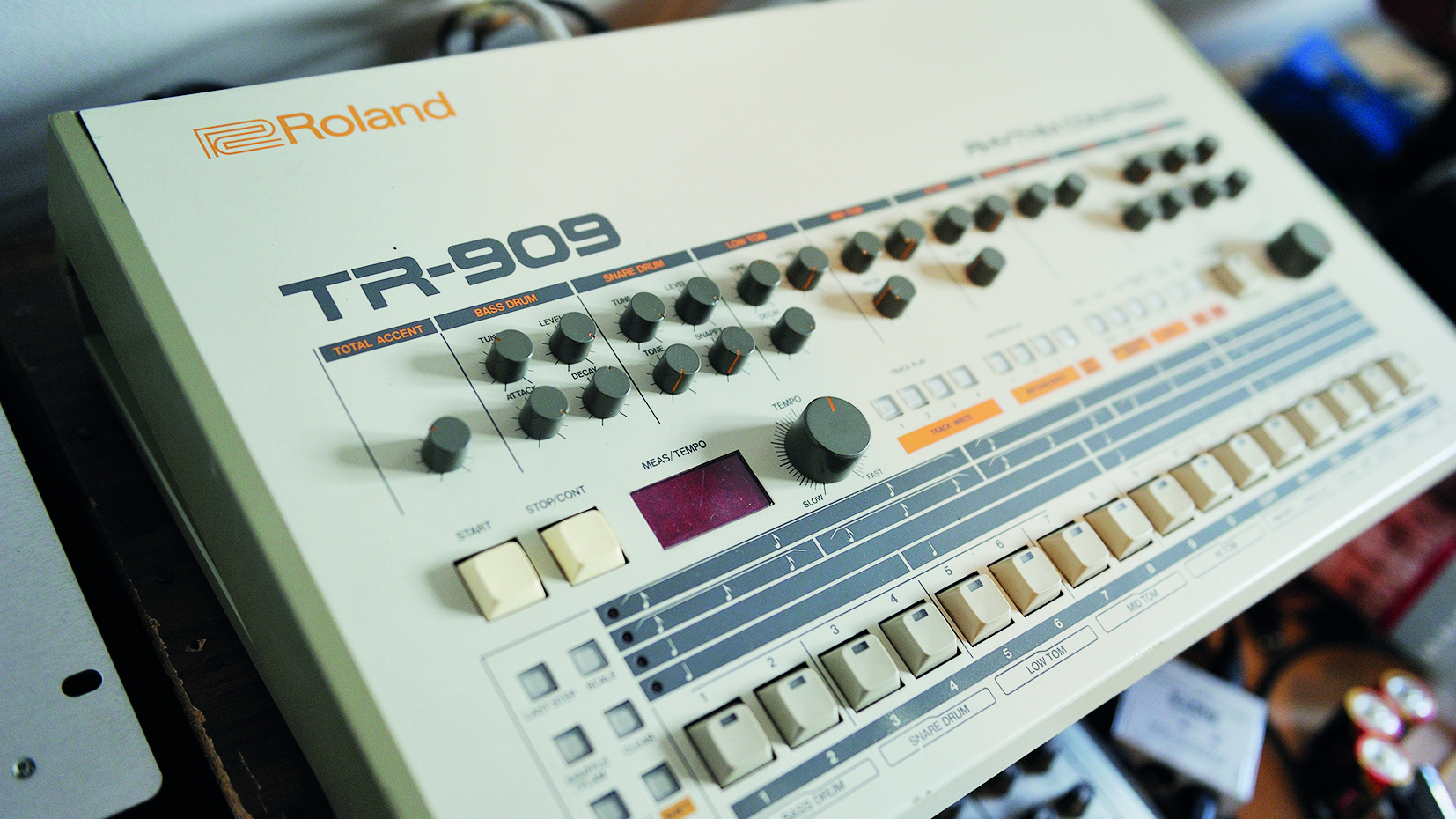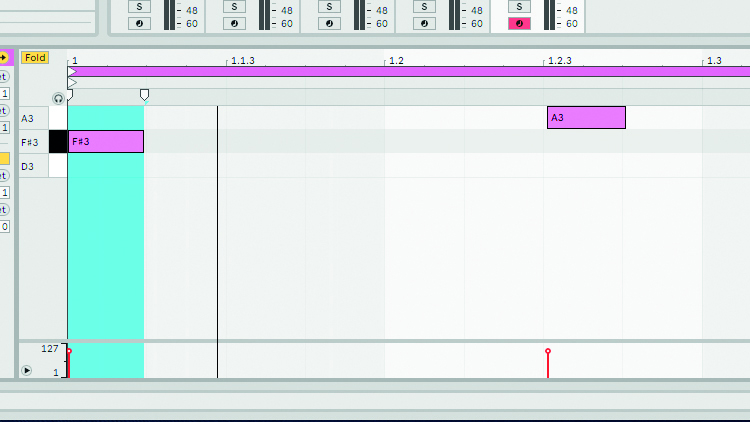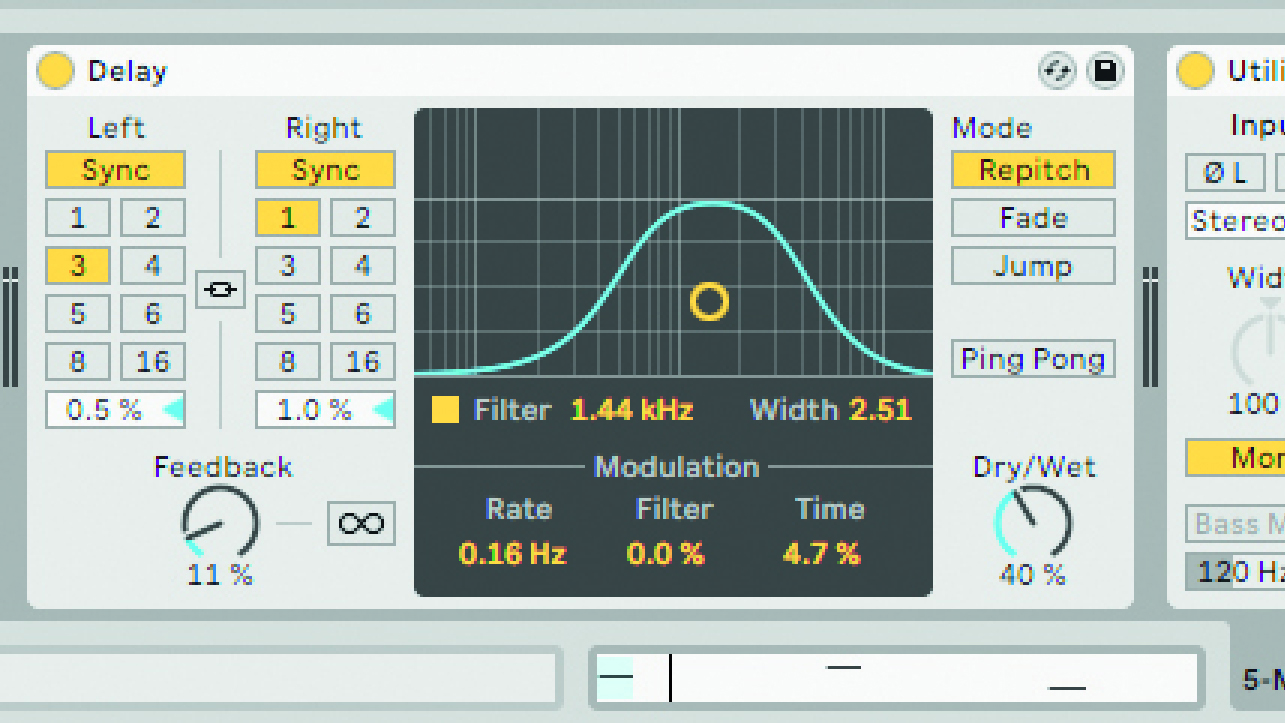Less is more: the beginner's guide to minimal dance music
Built around sparse beats, repetitive loops and simple arrangements, ‘minimal’ dance music might look easy to make, but it's not as simple as it sounds...

In electronic music circles, the word ‘minimal’ tends to be applied to a specific lineage of producers, beginning with Detroit techno originators like Robert Hood via the work of Richie Hawtin, Ricardo Villalobos and Wolfgang Voigt.
In reality though, the application of minimal production and composition techniques is far more wide-ranging than that, found in classic Kraftwerk tracks, the dub techno of acts like Basic Channel, the more stripped-back ends of drum & bass, drone and ambient music, and even pop productions by the likes of The Neptunes.
In a wider musical sense, minimalism as a form is typically linked with 20th century composers like Steve Reich, Terry Riley and Philip Glass. Despite existing in a more high-brow sphere, the work of these composers is far from unrelated to the minimal styles you’ll hear pumping out of a club sound system.
Take a listen to the shifting pulses of Reich’s Music for 18 Musicians and it’s not hard to see comparisons with the subtle drum machine variations of Robert Hood’s best M-Plant releases.
What links all minimal music though, is that it sounds easier to make than it is. With so few elements involved, there’s nowhere to hide and the line between subtle and dull is fine indeed.
All about the loop
When it comes to making minimal electronic music, there are no hard and fast rules beyond the most obvious: less is more. The whole idea involves stripping the music back to just the most important elements and wringing as much as possible out of these core ideas. Throughout the history of minimal music, it’s usually appeared as a counterpoint to more ‘busy’ styles of dance music.
Although it wasn’t necessarily the first minimal electronic record, Robert Hood’s 1994 masterpiece Minimal Nation is one of the most important foundations of minimal techno and is a great place to start when examining how minimal production styles work.
Want all the hottest music and gear news, reviews, deals, features and more, direct to your inbox? Sign up here.
Hood has described the sound of the record as a reaction to the increasing tempos and complexity of techno as it spread across the world. In part, it was a record created out of necessity; Hood had been struggling financially at the time, and so the album was created using a bare-bones setup of synths and drum machines picked up from a pawn shop. He used little more than an SH-101, Juno, TR-909 and Yamaha DX1000.

Beyond necessity, Hood also cites a desire to reinject a little humanity into the machine-heavy techno sound. The synth riffs on Minimal Nation were programmed ‘live’ using a Yamaha QY sequencer, resulting in the album’s distinctive blend of mechanised and organic feel.
As is true with most minimal electronic styles, the arrangements of tracks on Minimal Nation are very simple. Although the tracks do build, with additional elements being introduced as the arrangements go on, there are no real breakdowns to speak of, and certainly nothing you could call a ‘drop’. Effectively the tracks are all variations on one or – at their most elaborate – two basic ideas.
Naturally, if you’re going to use this sort of approach in your own music you need to remember that your track is going to live or die on the strength of that main riff. Minimal dance tracks often take a single loop or riff and run with them for four, six or even ten or more minutes. It goes without saying that unless that loop has a certain ‘something’ to it in the first place to hook the listener in, then it’s not going to hold up to that sort of repetition.
Unfortunately, there’s no simple recipe for creating a killer loop, but there are some basic principles to consider to help you get there. Since melodic progression isn’t really a factor here, you should focus your energy on developing groove and interesting sound design. A completely rigid groove is likely to get boring quickly, so try applying swing to one or more elements or nudging a few percussive hits off the grid.
Start with basic elements - for example, some simple percussion, a two or three-note bassline and a chord stab - and spend time experimenting with how they interact. Use accents and velocity to emphasise one or two beats in the bar. Consider what’s going on in each part of the frequency spectrum. Try adding a slide/portamento, ghost notes or reversed percussive hits to help your loop groove a little.
Tools and techniques
Getting a killer loop or two going is half the battle, but turning those elements into a great minimal dance track isn’t as simple as just duplicating them across your DAW’s timeline. Great minimal music often gives the illusion that nothing is changing while making subtle, often nearly imperceptible changes to the sounds that shift the feel of the track over time.
The key to making this work is considering what element you intend to evolve at sound design stage. Filters are an obvious choice; slowly raising the cutoff and/or resonance of a low-pass filter over the duration of a track is a tried-and-tested way to add progression to a repetitive synth loop. Other synth parameters work equally well, though – small adjustments to an amp envelope or changes to the shape and tone of your oscillators go a long way.
Effects have played a mixed role in minimal music’s evolution. By their nature, minimal beats tend to eschew heavy processing in favour of simple, punchy sounds. On Minimal Nation, effects processing is almost non-existent, save for a small dash of reverb added by Hood’s mix engineer, which gives the album a distinctive sense of space.
Later evolutions of minimal dance music often use delay and reverb as sound design tools for creating and evolving a groove over time. Dub techno, meanwhile, takes the minimalism of leftfield techno and combines it with dub’s distinctive heavy delay processing.
Getting a killer loop or two going is half the battle, but turning those elements into a great minimal dance track isn’t as simple as just duplicating them across your DAW’s timeline.
Even when used subtly, adjusting effect parameters over time is a great way to evolve otherwise repetitive sounds. Recent albums from Discwomen co-founder Umfang are a great example of this – on super-minimal tracks like Where Is She, her reverb design is as much a feature of the groove as the synths and drums.
In gear terms, there’s no set paradigm for how to stock your studio. While a lot of minimal producers use a stripped-back hardware setup, you can find just as many working in-the-box and making use of samples.
One thing common among minimal music makers is a tendency to limit the sound palette to just one or two instruments. Whether using virtual instruments of hardware, try limiting yourself to a bare minimum of instruments (or a single, thematically-consistent sample pack) and wring as much out of them as possible. As well as giving you consistency, this can also be an inspiring creative challenge in itself.
Punchy drums are a must for minimal styles of dance music. Since you’ll be relying on fewer sounds overall, what’s there needs the power to carry your track momentum on its own.
Roland’s TR-909 is an obvious choice, still the go-to machine for much of house and techno thanks to its punchy percussive sounds and tight-but-weighty kick. Of course, the problem with using the same machine as countless others is that it makes it far harder to make tracks stand out.
here are countless excellent alternatives out there. Arturia’s DrumBrute Impact and Korg’s Volca Drum are both great for punchy sounds on the cheap, while the MFB Tanzbar 2 or Jomox Alpha Base are both killer minimal machines at the pricier end. Digital synths can be great for creating characterful but punchy percussion, too – try an FM plugin such as FM8 or a hardware machine like Elektron’s Digitone for something a bit different to analogue-style drums.
If you’re working with samples, preparation will go a long way. Minimal tracks tend not to use a lot of buss/group processing, so make sure your samples sound exactly how you want before you load them into a sampler. Try creating your own sample packs before you write. Layer drum samples, add a little saturation, EQing, compression… basically anything needed to get your hits sounding their best. Then when you come to sequence your minimal beat, your drums should hit home without needing much mix attention.
Riff inspiration with delay effects
While delay wasn’t a big feature of early minimal house and techno - due to the expense of hardware delay units - it’s become a key tool for producers.
Since minimal music often has fewer elements and larger gaps between beats, delay can help to fill out the frequency spectrum and add extra depth to the sound. Delay is often used as an overt part of the rhythm, rather than adding a subtle effect.
Below, we’ll use several delay types to transform a simple riff rhythm. Modulating these effects over time can add progression to your track.

Step 1: We start with a virtual analogue lead sound. We program a simple single-bar pattern of just three notes with no changes in length or velocity – not a lot interesting going on here. Rather than try and spice things up on the piano roll, let’s use delay to generate a better riff.

Step 2: By using a stereo delay device with a mono utility after it, we can use the left and right delays as two mono delay lines working together to add rhythmic interest. Timing offsets do the same. A dry/wet value of 40-50% makes the delay feel part of the original riff.

Step 3: Or try a MIDI delay instead of an audio one. This duplicates the notes before they reach the synth, rather than delaying the audio. The Max for Live version lets us change pitch on each repeated MIDI note, for a result more like a basic arpeggiator.
Future Music is the number one magazine for today's producers. Packed with technique and technology we'll help you make great new music. All-access artist interviews, in-depth gear reviews, essential production tutorials and much more. Every marvellous monthly edition features reliable reviews of the latest and greatest hardware and software technology and techniques, unparalleled advice, in-depth interviews, sensational free samples and so much more to improve the experience and outcome of your music-making.
